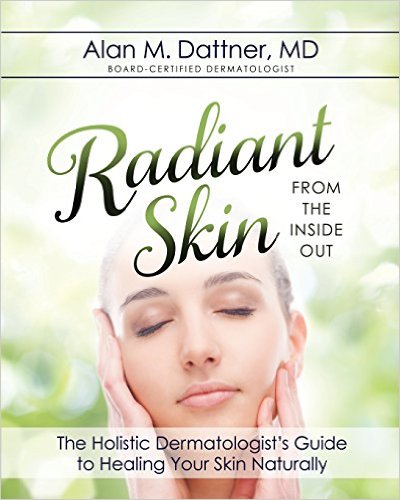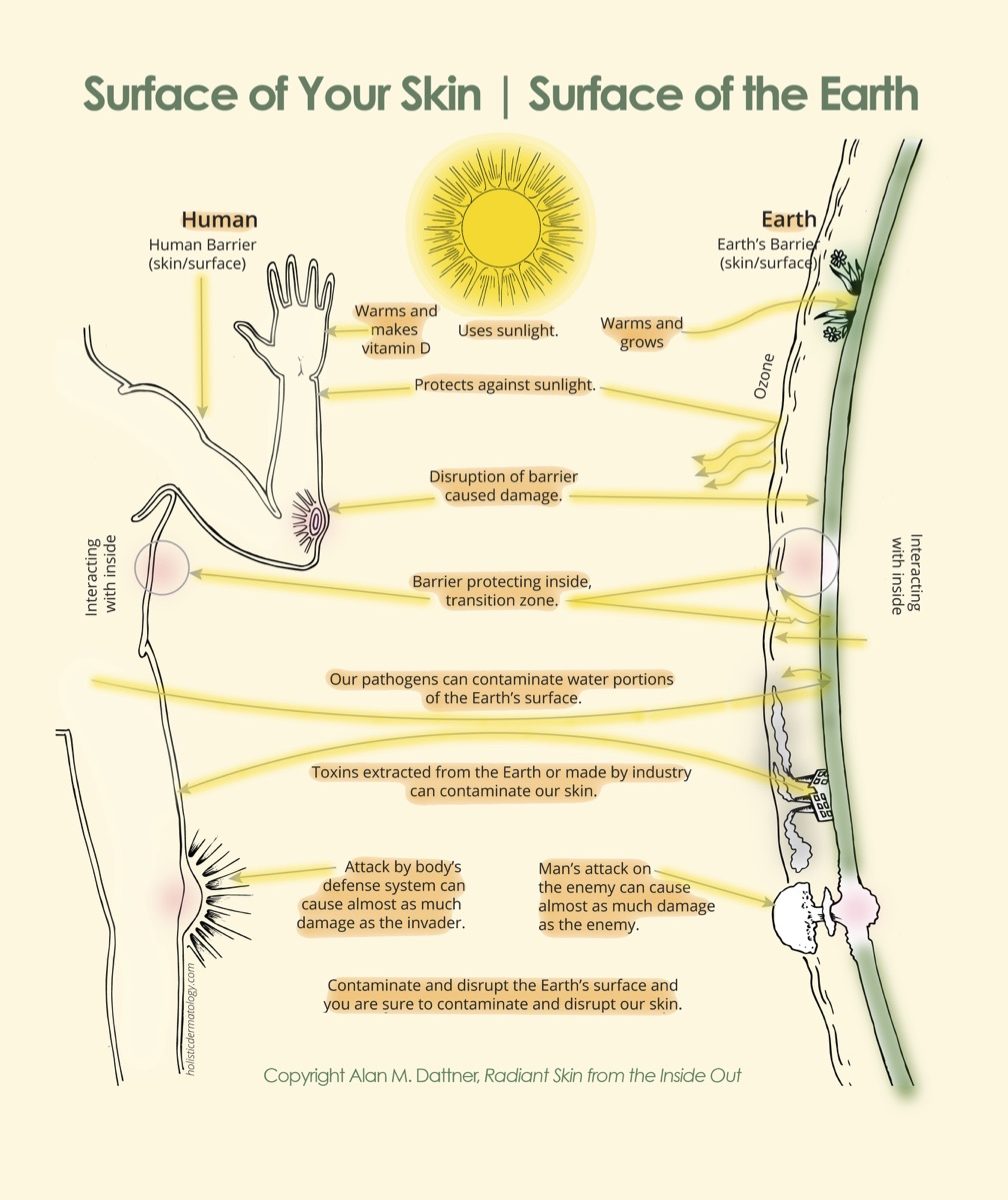Click here for Part I or Part II –
One of the key features of Holistic Dermatology as I see it, is correcting broader causes of skin disease as they affect our entire population. Many of the underlying aggravators of skin disease are very common to our culture and current state of affairs. These include excesses in the diet, as well as toxic substances in our food, topicals, and environment. Many of the problem substances, like sugar, are prized or craved by consumers, so their overuse is driven by taste and addiction as well as widespread availability and sales pressure. Also, agricultural trends such as hybrid selection, GMO products, and pesticide use may lead to pathophysiologic changes that predispose to skin diseases. In addition, what is popularly considered healthy may really benefit some people, and be a constant setback for others seeking natural or conventional treatment. Some of what we tell our patients should be broadcast to the world.
On an organizational level, dermatologists from the AAD, Skin Cancer Foundation, and many other organizations, have taken the initiative to speak out and address population-based skin disease causal factors, such as photo-damage, by advocating sun protection. Individual dermatologists have emphasized the role of sugar and high glycemic foods in acne. In the past, and again more recently, excessive consumption of dairy products and high glycemic foods, have been associated with acne. The majority of the population does not seem to suffer from these general factors, but many of our patients do. Becoming aware of them can be helpful in ferreting out the cause of a patient’s skin condition. Sharing that awareness collectively with the public, as a group of experts on skincare, can lead to improving the skin health and cost of care of the general population.
Always, there will be resistance from those who grow, manufacture, and sell the offending products or product components. And there will be resistance from those who need, crave or consume them. For example, many people who follow a good diet eat excess sugar around Holiday time.
In addition, household products, work place chemicals, cleaning products, degassing fabrics, paints, topical creams, and much more, become part of our environment for their benefits and convenience, despite potential harm they may cause us. Some unfortunate people have a genetic inability to break down and eliminate toxic chemicals due to, for instance, lack of ability to methylate, because of genetic SNP’S (Single Nucleotide Polymorphisms) for that pathway.
A multi-faceted effort to help producers and consumers have safer products would go a long way in improving skin and general health. This would improve skin appearance, general health, and productivity, and lower healthcare costs.
Other potential population-wide aggravators include suppression of T-regulator lymphocyte activity by accumulated toxins, such as tobacco smoke, leading to inflammation that those T-cells would otherwise suppress. Pro-inflammatory gut flora also leads to inflammation, as does chronic infection. Sleep deprivation, reliance on stimulants and chronic stress all deplete the adrenal glands, which normally suppress inflammation by cortisone release.
The unfortunate occurrence of a combination of these factors could lead to the “perfect storm” making an individual susceptible to an overreaction to internal and environmental aggravators with inflammation and a skin condition. From a holistic perspective, these factors and more, need to be explored and corrected to clear a patient’s chronic skin disease individually and as a population.
From a wider holistic perspective, dermatologists have an opportunity to recognize and report disease-producing issues and to evolve solutions. The AAD annual meeting is truly a gathering of dermatologists from all over our planet. Dermatologists are experts at dealing with the most visible narrow interface between the human body and the environment. Another narrow interface exists, between the planet Earth and the rest of the Universe. There is a similarity between the interfaces, at the skin surface and at that of the Earth. If there is pollution or other disturbance on the surface of the Earth, the surface of our bodies can also be affected. (See the image attached from Radiant Skin from the Inside Out. Permission to reproduce image ONLY if its source is properly quoted- Radiant Skin from the Inside Out by Dr. Alan Dattner).
We have initiatives to protect against sunshine damage by erecting sunshades. Why don’t dermatology societies collaborate with environmental groups to improve industrial and culture-wide issues impacting on skin health? A well-conceived forward-thinking approach could benefit the entire environment and global individual health. Anyone looking beyond instant profit can see that helping companies produce more health-safe products will in the long run produce tremendous savings for every sector of society.
Areas for collaboration with environmental organizations could include reduction of toxins, endocrine disrupters, and pesticides in food, water, and topical skin products. Creating a culture that fosters a less inflammatory microbiome in peoples’ gut could stem the rise of eczema and autoimmune disease.
In addition, some issues to be addressed are the increase in sugar and high glycemic carbohydrates in the diet, glycation from high temperature heated oils, remedied by producing healthier snacks.
These are just a few issues; you likely see many others in your practice. In a profession that daily helps the lives of others on an individual basis, we could have an opportunity to share our observations in a way that helps the wider population as well. This is another aspect of taking a holistic approach to the treatment of the skin on a global level. Making positive change at the whole planet level based on our expertise will bring our specialty increased respect and leave a positive legacy beyond the good work we do in our practice and research. It will benefit our children, families, community and the inhabitants of the wider world as well.
Testimonial Videos:
https://www.youtube.com/watch?v=3-ojaYjcK2Y
https://www.youtube.com/watch?v=7SEm2B5P2EA
Resources:
Dr. Alan Dattner’s Website for Holistic Dermatology: https://holisticdermatology.com/
Book:
Radiant Skin from the Inside Out: The Holistic Dermatologist’s Guide to Natural Skincare by Dr. Alan Dattner

Did you enjoy this article? Did you miss part I or II in the series? Check them out here.

